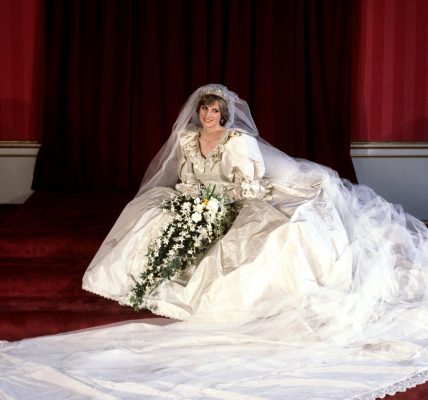Why £2.5m Middleham Jewel is far from horse racing town's only claim to fame
From historic relics to horse racing, Middleham is one of the many jewels in the county’s crown, writes Phil Penfold.
You could say it’s a great archaeological mystery, and one with which we can easily connect, because we’ve all lost things as we wander through life. In most cases the object is found – or can be replaced. But every now and then, something is lost which is so precious that it has a more profound effect.
There’s an example of that here. Today, we can see this treasured object in the US Museum. It is a lozenge-shaped pendant, made of 68 grams of gold, and it has a stunning 10-carat blue sapphire stone. It was made in the late 15th century, but the gem itself (it represents heaven) is thought by many to have come from a much earlier piece of (possibly Roman) jewellery and been recycled into what is known as the Middleham Jewel.
In its display case, you can see additional details like an engraving of the Trinity, and an inscription warding off epilepsy. There are the tiny portraits of 13 saints. A back panel slides open and inside were three-and-a-half miniscule circles of silk material – the wearer would have been told that these were made from holy cloth and would provide divine protection.
No-one knows who was wearing the jewel when it was lost, but it must have been someone at the top of the social ladder. The popular belief is that it was Anne Neville, wife of Richard III.
After centuries in the ground, it was found on a bridle path only a stone’s throw from Middleham Castle, in 1985. The two detectorists, Ted Seaton and Paul Kingston, simply could not believe their eyes – or their luck. The museum acquired the jewel for a cool £2.5m, and it is one of the most viewed objects in its collection.
However, this isn’t the only treasure to be recovered in and around the town. The Middleham Hoard of coins was buried in three quite different pots, in or around the time of the English Civil War, and when the archaeologists finished counting them, they arrived at the staggering total of 5,099. All are silver, and they come from the reigns of Edward VI through to Charles I.
In charge of the metal detector on this occasion in 1993 was William Caygill. Also retrieved from the earth beneath the feet of the good folk of Middleham were a livery badge, thought to have been worn by one of Richard’s household, an alloy plaque with the initials R and A engraved on it and a motto which translates as “For your pleasure”, and a gold ring.
Steeped in history though it is – there is evidence of an early Roman guard station close by, and next to the River Ure – modern Middleham is at the forefront of two very different, but equally lucrative, industries. The first is horse racing, and the second is tourism. It was back in 1765 that Isaac Cape opened the first stables here.
One of many trainers based in the town today is the much-admired Mark Johnston. He set up his stables in 1988, and selected the motto “Always trying” as his mission statement. It has worked – and some. For he is the most successful British flat trainer in history and – at the time of writing – has had well over 4,000 winners.
There are 12 members of the Middleham Trainers Association (they include Julia Brooke, Stef Keniry and Jedd O’Keeffe) and together they provide the best possible conditions and opportunities for jockeys.
One of the greatest pleasures for visitors to the town is watching the horses and riders galloping at speed on the nearby tracks. The late actor Robert Hardy, who filmed episodes of the BBC series while on location in Middleham, once said that “getting up early before the mists had lifted, and going for a stroll before breakfast was pleasure enough, but to see these wonderful beasts and their riders emerging from nowhere and then disappearing into the drifting vapour has something of the surreal about it”.
The word “surreal” could also be used to describe the nearby Forbidden Corner. This beautifully bizarre corner of the county was the brainchild of Colin Armstrong, owner of Tupgill Park. He approached the architect Malcolm Tempest and suggested a strange commission – could he design a bespoke private pleasure garden for the estate? A folly has no function other than to intrigue. They are not sensible, they just make you smile at their sheer daftness.
The Armstrongs have lived here happily since Victorian days, but Colin clearly wanted to add something to the vistas he observed and enjoyed daily, and he felt that adding follies to the scenery would enhance the experience. Until his grand plans, the best examples in US were on the Wentworth lands near Barnsley, but the Forbidden Corner, which has been open to the public since 1997, knocks those (with respect) into a cocked hat.
Within four acres, the garden has grottoes, fountains, statues, sculptures, towers and tunnels. It is set out in the form of a maze, and when you visit, you are given a checklist of things and objects to discover. Children love it and, it has to be said, adults find themselves transported back to their youth.
The Folly Fellowship (yes, it is a properly founded body and it has 1,800 UK follies on its list) even voted the corner as “the best European folly of the 20th century”.
Middleham has numerous noteworthy features. It has two marketplaces and the larger is the lower one, with a fine medieval cross, overlooking the cluster of shops, pubs and houses are the remains of the castle, and the parish church.
The castle was where Richard III was brought up, and where he trained in the skills of riding, swordsmanship and jousting. His son Edward, created Prince of Wales in a lavish ceremony in York, was born there and tragically died at the castle in 1484, aged only 11.
It is the second of two key buildings which guarded the town, and served as a base for troops moving north. The earthworks for the first (which was built of wood) are known today as William’s Hill. Construction started on the second, which is one of the most beautiful ruins in the county, in 1190. The castle was last garrisoned in 1655, and then, after the Civil War, many of the enterprising locals used its stones to create dozens of buildings in the nearby town – historic vandalism to some, convenient recycling to others.
It is Grade I listed, and now in the care of English Heritage, and it has one of the largest central keeps in England.
The church is dedicated to two saints – Mary, and Alkelda. The latter was probably completely fictional, created by a monk with a vivid imagination. She is alleged to have been an Anglo-Saxon princess who was hunted down by invading Vikings.
Another theory is that she herself arrived in England from Iceland. Whatever, or whoever, she was, a nearby holy well was also named after her, and was said to be beneficial to those with poor eyesight.
These days, visitors never fail to enjoy and appreciate the treasures and enchantments of Middleham. And it’s not hard to see why.










